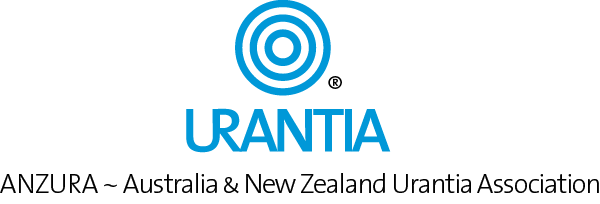(Editor’s Note: Mining the Archives is a collection of articles that have been published in various newsletters over the years and have been lying buried in the archives. A team of volunteers have been “mining the archives” for the gems, so now we can bring them into the light of day to share using modern-day technology. This one is from Innerface Newsletter, September 2002. Additional note: The next two articles in this issue of Arena-Winter 2021 by William Wentworth and Nigel Nunn are thoughts inspired by this 2002 article of Gen Glasziou’s.)
Mathematics and Science Catch up with The Urantia Book
The Late Ken Glasziou, Qld
In the mortal state, nothing can be absolutely proved; both science and religion are predicated on assumptions. [Paper 103:7.10, page 1139.2]
In 1935 that statement could only have been made with confidence by a handful of our most learned men.
The foundation for logical thinking was laid by the Greeks way back in ancient times. Initially they were trying to formulate the guiding principles of discourse—which gradually broadened into Aristotelian logic, the latter work holding sway for almost two thousand years.
 Isaac Newton started a revolution when he converted physics into a branch of mathematics. For scientists this meant that Euclidian geometry having for its foundation a set of axioms held to be self-evident and not requiring formal proof was also a foundation stone of their physics.
Isaac Newton started a revolution when he converted physics into a branch of mathematics. For scientists this meant that Euclidian geometry having for its foundation a set of axioms held to be self-evident and not requiring formal proof was also a foundation stone of their physics.
A major work to put mathematics on a more reliable foundation was undertaken by the outstanding German mathematician, Gottlob Frege, who had already published the first volume of a highly acclaimed work and had the second ready for press when a short letter from Bertrand Russell pointed out what would seem to be a trivial and unimportant question. “Is the set of all sets a member of itself?” This apparently harmless question completely undermined Frege’s work and caused him to add an admission to his second volume that the whole of the work was now useless.
Next on the list of similar calamities was Principia Mathematica, an enormous work by Whitehead and Russell which apparently found a way around Frege’s problem but later fell victim to the work of Kurt Gödel in 1929. Effectively Gödel’s work means that any system of axioms that is complete enough to be useful cannot do otherwise than contain unprovable truths. So how can we know whether they are true truths? Practically this means that each system must be subjected to rigorous experimental testing. It also means that we have no way of guaranteeing that a flaw will not appear at some future time—we can never be absolutely certain that it will not.
Over the last seventy years there has been no successful challenge to Godel and in fact his work has been both substantiated and extended. But the reality is that the vast majority of those working in science and mathematics have chosen to ignore Gödel and continue on with the dream of a final unified theory made popular during more than twenty fruitless years of searching by the great Einstein.
Among the relatively recent work has been that of Paul Cohen who extended the Gödelian approach to include set theory, and Alan Turing who discovered that there is a “stopping” problem with computers. Turing asked the question of whether or not there is some way to predict beforehand whether a computer program will find an answer and stop or whether it will go on forever. His answer was there is no way of knowing. Besides its deeper theoretical ramifications, this apparently simple “stopping” problem, of no importance to you and me, certainly is important to the administrator who has the task of allocating extremely expensive supercomputer time to those with the need.
Among those who have sought answers is Gregory Chaitin, an IBM research mathematician who asked if there is no way to get a yes or no answer, is there at least some way to estimate the probability that a program will or will not stop. Chaitin spent twenty years working on this problem before finally coming up with a number he termed omega having a value between 0 and 1 that measures this probability—but, alas, its binary digits were found to be random and independent. More importantly than computer stopping, the randomness of the digits of Chaitin’s omega imposes limits on what can be known from number theory, which in turn, leads to the conclusion that randomness is the true foundation of mathematics.
That may sound far-fetched but on further reflection surely is in accordance with experience. One mathematician puts it this way, “It means that a few bits of mathematics may follow from each other, but for most situations those connections won’t exist. All a mathematician can do is to aim to find the little bits that do tie together, hence that solvable problems are like a small island in a vast sea of undecidable propositions.”
The basis of physics, in fact of all science, is mathematics. Hence the conclusions regarding the inconclusiveness of mathematics flow on to all other science—which is perhaps what we have always known intuitively.
There is a theory which states if anyone discovers exactly what the universe is for and why it is here, it will instantly disappear and be replaced by something even more bizarre and inexplicable. There is another theory which states this has already happened. (Douglas Adams, 1952-2001, The Hitchhiker’s Guide to the Galaxy)

